
I thank the internet gods for stock photography all of the time. As someone who never mastered the art of taking pictures, these images allow me to make pretty content despite myself. Hallelujah.
I’m also a girl on a budget, and free photo resources are essential. Stock photo sites where you can find royalty-free images regularly come to my rescue, so I’m excited to share the best sites and some tips for taking full advantage of these resources.
The power of visuals in social media
Social media users rely on beautiful photos and graphics to tell compelling stories about their lives and businesses. They’re a powerful tool for communication and brand building.
As much as I love the written word, the perfect image has special powers. It can:
- Attract attention
- Communicate ideas more efficiently
- Improve a viewer’s ability to remember something
- Drive better engagement
- Appeal to search algorithms
But not all photos are created equal — there are certain characteristics an excellent stock photo contains.
Characteristics of excellent stock photos
When diving into free photo resources, the perfect stock photo will have these attributes:
- High quality. Blurry or pixelated images can harm your brand’s credibility. Always opt for high-resolution photos.
- Authenticity. For the most part, images should feel real and relatable. Overly staged or artificial photos can alienate your audience. Unless a heightened style is a self-conscious part of your campaign, go for pictures that seem accessible and organic.
- Appropriateness. The image should align with your brand identity and resonate with your target audience.
- Engagement. Great photos draw you in. They may be interesting, inspiring, amusing, calming, puzzling, and so on. Perhaps they convey a certain mood or message. Some element or quality affects the viewer, inviting them to engage.
Just as in blog posts or other forms of content, the high-quality images also have to work for your specific brand and content.
Relevance
A picture is worth a thousand words, but are those words telling the right story?
Visuals should be relevant to your brand and message. Otherwise, they might confuse or even alienate your followers.
In social media, relevance should also be instantly identifiable. A legal firm specializing in medical malpractice probably wants to focus on law office images rather than healthcare ones, which could send the wrong message to someone scrolling through a feed.
Cultural and seasonal relevance also matter. A Christmas-themed visual won’t perform as well for audiences that don’t celebrate the holiday. It also might seem strange in content published during the spring.
Clarity
In the world of social media, clarity is king. Your visuals should be clear and easy to understand at a glance. Users often move through content quickly, and if your image is too complicated or confusing, they’ll likely skip over it.
Prioritize:
- Simplicity. Opt for images with a clear subject and minimal distractions.
- Contrast. Use high-contrast images to make your subject stand out.
- Consistency. Keeping visuals consistent with your brand’s aesthetic and color scheme makes them instantly recognizable.
Make sure any text is readable, too. Accessibility guidelines suggest you leave text out of your image when possible. Applications can modify or interpret text more easily, accommodating user needs or preferences.
Emotional appeal
The perfect visual evokes emotion, creating a strong connection between your brand and the viewer.
For example, an organization protecting wildlife may incorporate images of animals suffering due to habitat loss into their non-profit storytelling, inspiring viewers to take action and support the cause.
It’s important to find the right balance when using emotional appeal. The emotion should never feel manipulative or inappropriate. Authenticity is key.
The best free photo resources
If you have a particular image in mind and the usual suspects don’t have it, you can run a Google search for free-to-use images on a theme. In addition to filtering your image source by usage rights, you’ll need to double-check the linked licensing information, but it is possible.
These stock photo websites are easier to use and, most times, will have the type of image you need. Many advertise premium content or memberships, but a free account will permit you to download plenty of images to post on your accounts.
Unsplash
Unsplash is one of the most well-established sources of royalty-free images. It’s known for its wide variety of images, which photographers worldwide contribute regularly.
The platform houses over five million free high-resolution images and has an easy-to-use interface with an efficient search function.
There is a premium membership option — Unsplash+ — with additional pictures and fewer copyright restrictions on commercial use.
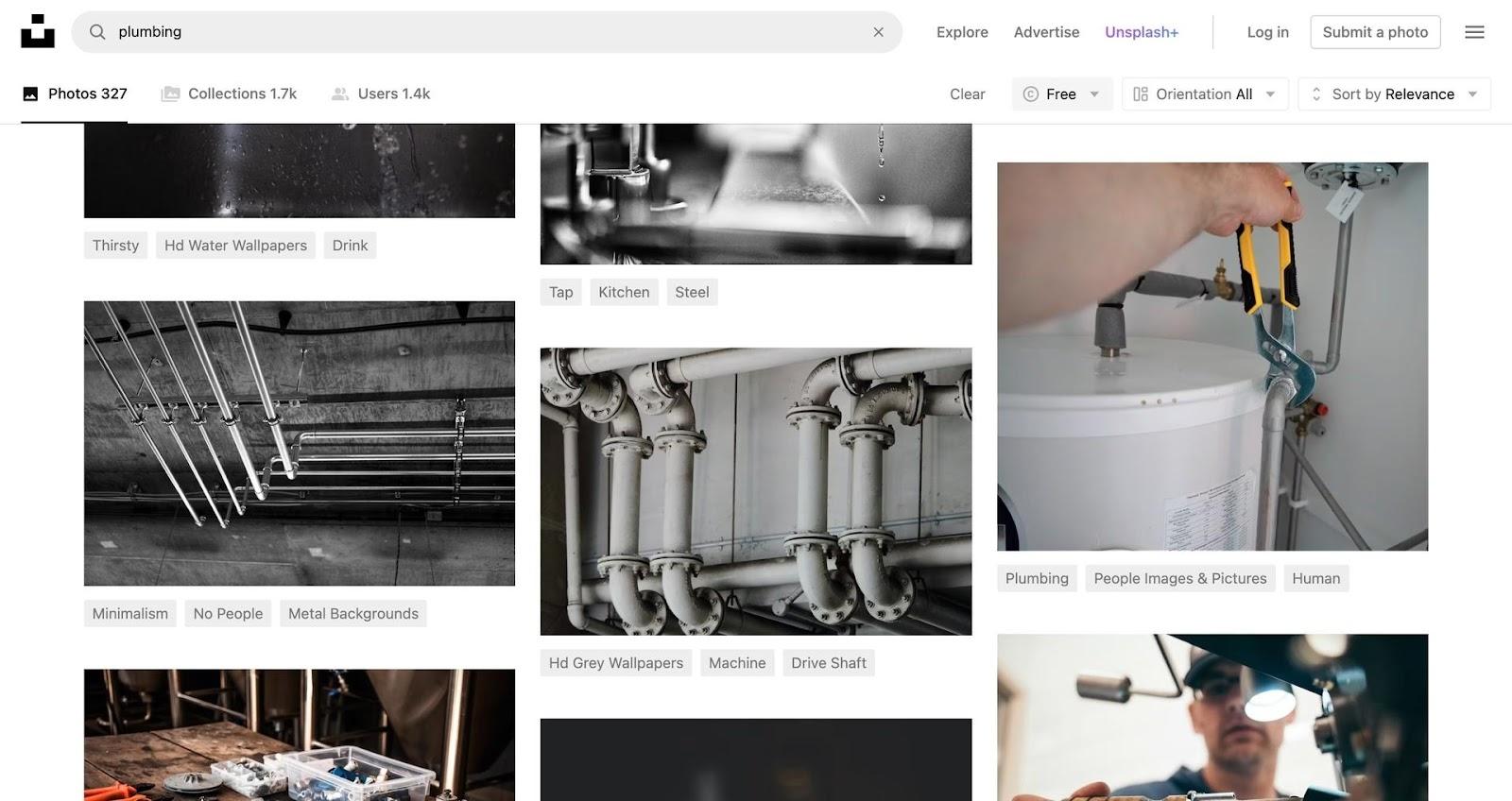
Pexels
Pexels is a platform providing free stock photos and videos. It prides itself on its selection of trendy, aesthetically pleasing images. Its library is smaller than other free photo resources, but it’s high-quality and entirely free.
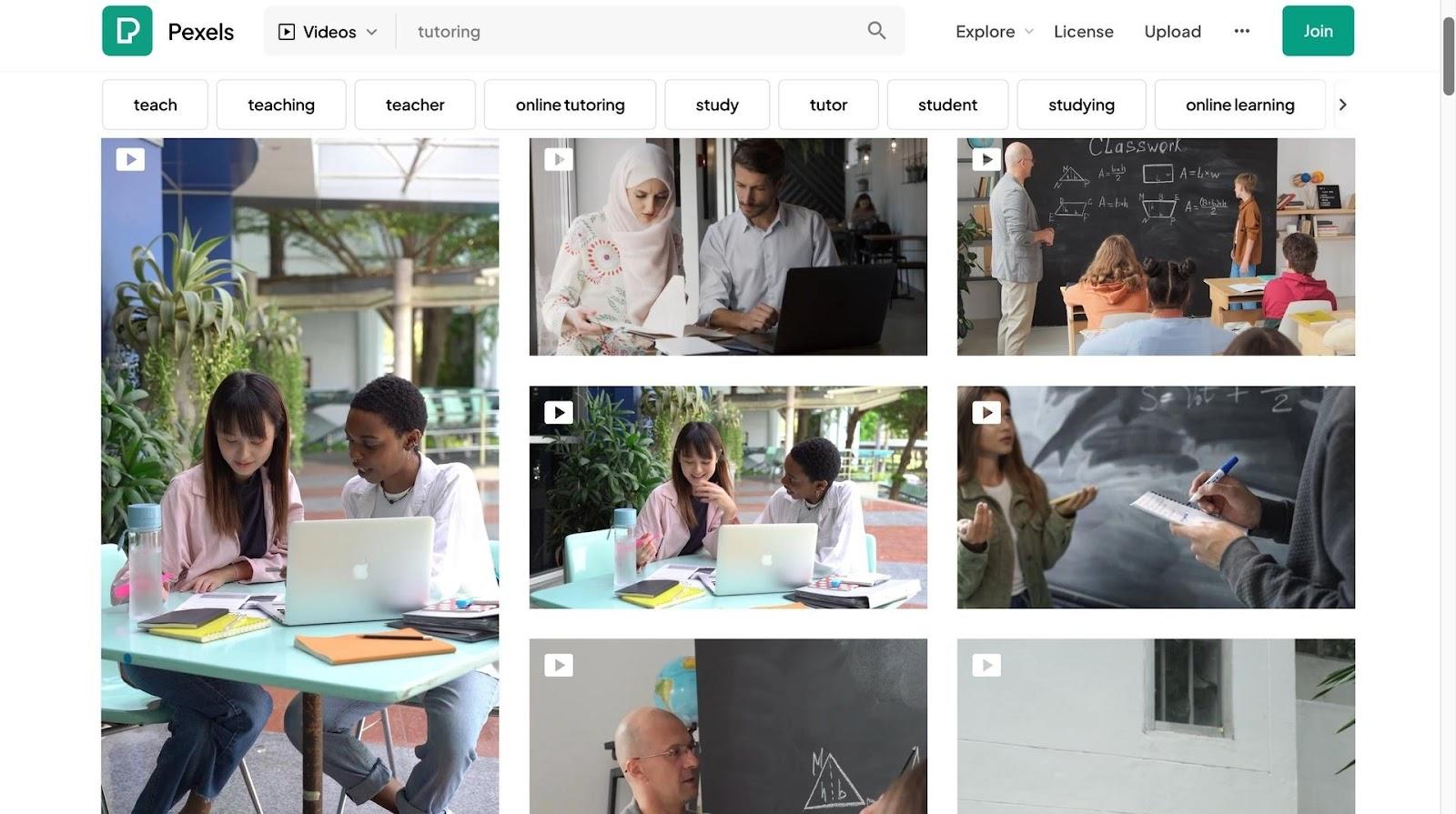
Pixabay
Pixabay provides all kinds of free media: photos, videos, illustrations, music, GIFs, and sound effects. Its strength is its broad spectrum of content types. There’s no premium plan, but you will find advertisements for paid content.
Tip: Pay attention to the quality of your images to maintain brand consistency.
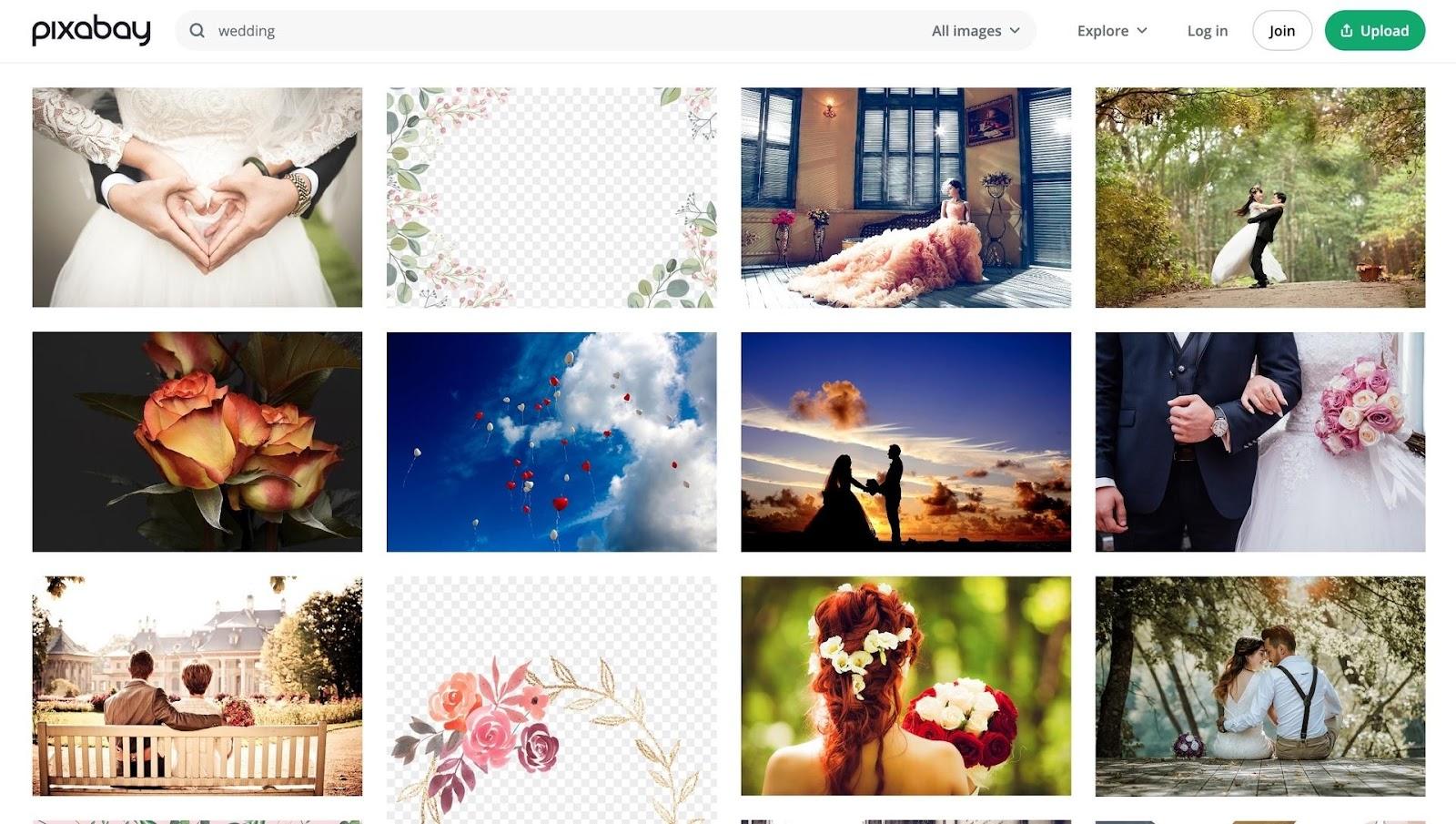
Burst
Burst is the stock photo platform powered by Shopify, the ecommerce giant, but you don’t have to be a customer to create a free account and start downloading pictures.
Because it’s linked to Shopify, the public archive is particularly strong when it comes to retail trends and product photos.
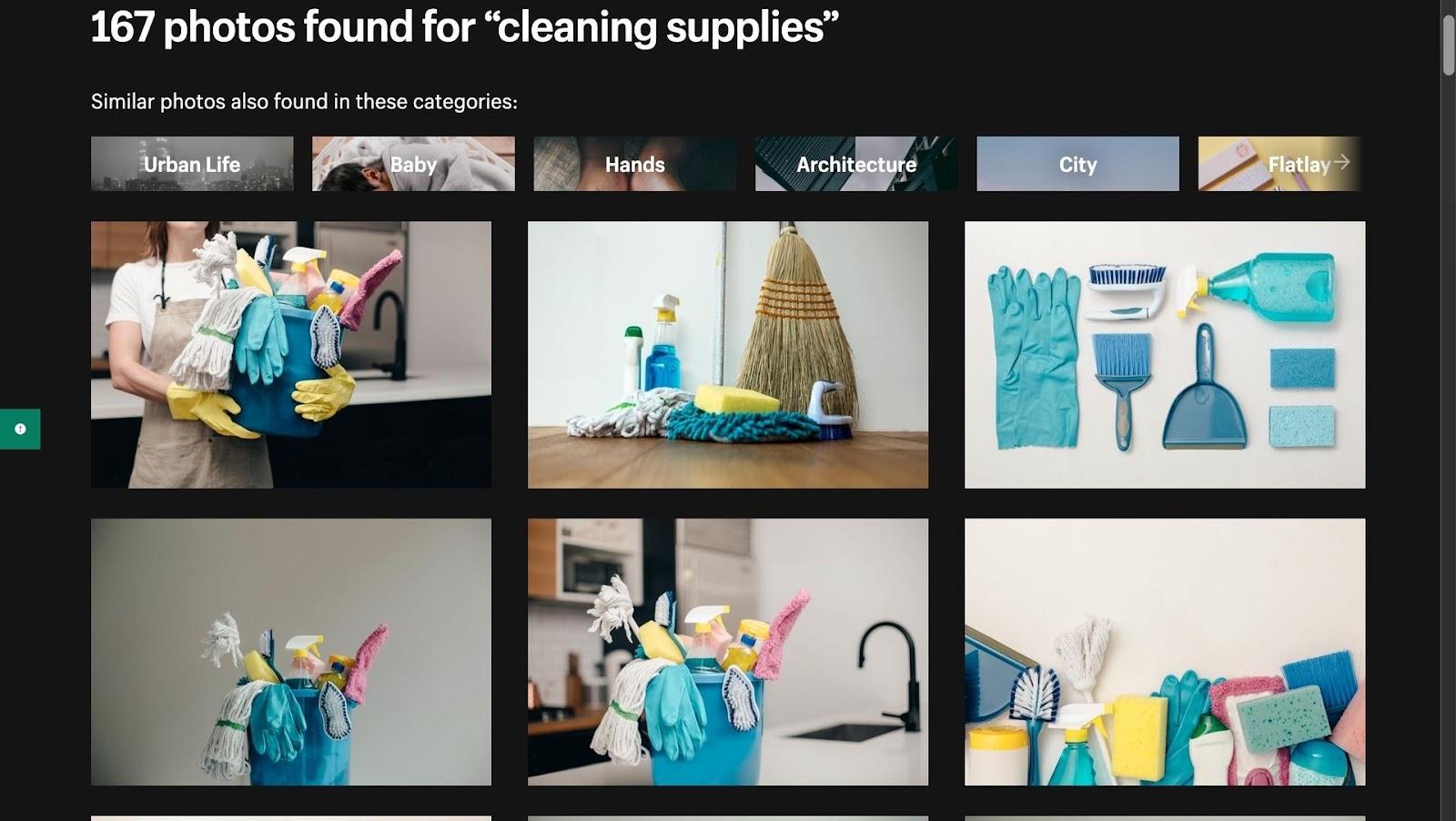
Freepik
Freepik offers not only photos but also icons, Photoshop documents (PSDs), and vector graphics. A vector image is a digital graphic using mathematical formulas to create outlines and shapes, which allows you to resize it without losing quality. They are ideal for creating logos and other designs.
While many resources are free, some Freepik content is only available with a premium subscription. Also, non-premium users must attribute the images.
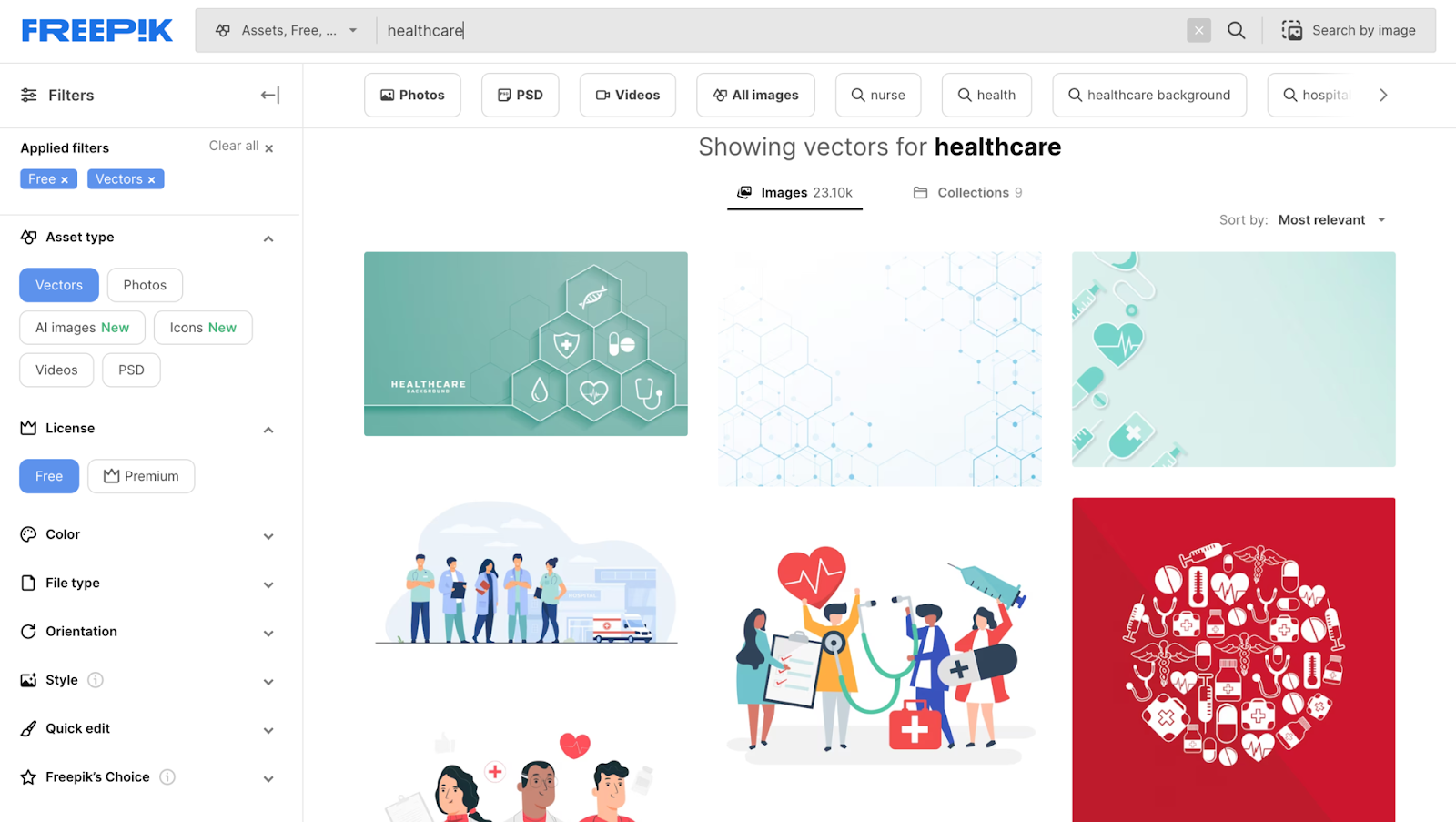
Canva
For those who want a little more control over their images, there’s Canva. In addition to free photo resources, Canva includes image editing tools and easy-to-customize templates for different channels.
Small businesses and marketers can even take advantage of Constant Contact’s built-in Canva integration. Find and perfect the images you want directly within your email, social, and web content.
Best practices for using free photos
Use free photo resources responsibly. These are powerful tools that deserve your respect and compliance.
Check the license
Before downloading and using a free photo, make sure you understand its image use rights.
Some free photos are in the public domain, meaning they’re free of all copyright restrictions and can be used however you like.
Others are offered under Creative Commons (CC) licenses, which permit you to use the image without obtaining permission from the photographer. However, different types of CC licenses come with their own sets of restrictions. For example, some allow only non-commercial use, while others may permit it but require attribution.
Always check the license before using a photo to ensure you’re complying with its terms.
Be aware of restrictions
Even if a photo is licensed for free use, there may still be restrictions on how it can be used. For instance, photos featuring recognizable individuals may need a model release to be used commercially. Similarly, be careful when you see photos depicting copyrighted works, logos, or trademarks.
Be sure to read the terms and conditions on the website where you’re downloading the photo. When in doubt, it’s best to choose another image or seek legal advice.
Common limitations on photo licenses include:
- Unlawful use
- No use of “editorial use only” content for commercial projects
- No standalone file use
- No use of trademarks or logos
- No subscription abuse
- No false representation of authorship
Creators can also restrict the degree to which you may alter an image with an online photo editor or how often or long you may use it.
Give credit to the photographer
Give credit where it’s due!
Although only sometimes required by the license, it’s a good practice to credit the photographer whenever possible. A simple mention of the photographer’s name and a link to their portfolio or the source of the image is often enough. This shows respect for the creator’s work and helps promote their work to a wider audience, which is why many creators offer up their valuable pictures.
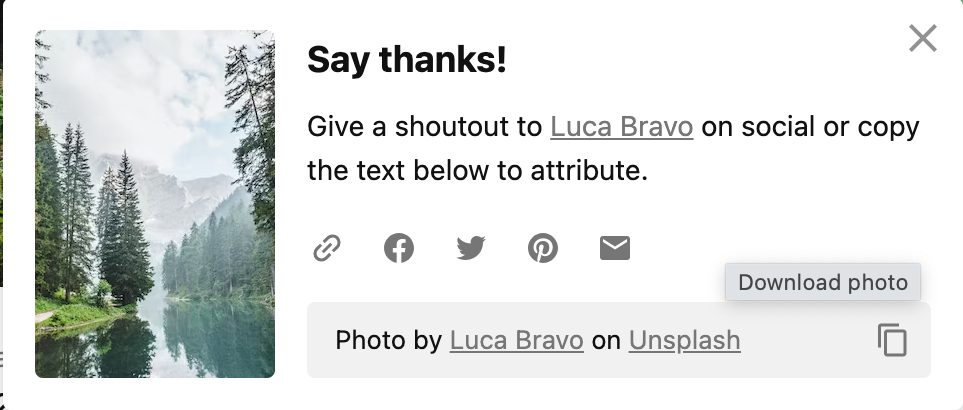
Use high-quality photos
The quality of the photos you use reflects on your brand. Always opt for high-resolution images and pay attention to factors like composition, lighting, and color.
Low-resolution, blurry, or poorly composed photos look unprofessional. If you’re using pictures to make your profile and content stand out on LinkedIn, you don’t want to attract attention for the wrong reasons. The same is true even for platforms less focused on professional networks.
As humans, we’re drawn to whatever is in focus — it tells our eyes where to look, similar to how we are drawn to light. For example, if you want me to look at a photo where the product is out of focus, and the person holding it is in perfect focus, my eye is going to focus on the person first then look at whatever it is they are holding.
Attention spans are so much shorter nowadays, so it’s important that your photo draws your viewer’s attention to where you want it to go right away.
Gabriella Hunt, Professional Photographer & Content Marketing Manager
Edit the photos to match your needs
One of the benefits of using free photo resources is that you can use an image editor and tweak a picture to suit your needs. You might crop it, adjust the colors, or apply filters to match your brand’s aesthetic.
Just keep in mind that some licenses restrict modifications. Here’s another reminder to check the license terms of your chosen stock photography.
When to use free stock images and when not to
Free stock images offer an easy and cost-effective way to incorporate pictures into your social media strategy. They allow you to incorporate visual interest and variety on a budget. That doesn’t mean they’re the answer to all your social image needs.
Use stock photos to:
- Convey themes or moods
- Add visual appeal to a text post
- Tease possibilities or future developments
- Illustrate informative content
- Incorporate seasonality or holiday images
On the other hand, avoid using what you find through free photo resources if you have concerns about any of the following free photo resources:
- Implicit authorship. Viewers expect different levels of authenticity depending on the content. For instance, as a restaurant owner, posting a generic stock photo of a dish can be misleading. Besides, compelling, authentic images of your actual creations are at the heart of restaurant photography.
- Inconsistency in style or quality. Free stock photos come from different sources. Consistency is crucial for a professional and cohesive social media presence. As an interior designer showcasing a minimalist aesthetic, using a stock photo with a contrasting, ornate style can disrupt your feed’s visual harmony.
- Overuse. Free stock images are widely accessible, so you might come across the same image used repeatedly. Try to avoid pictures that look exactly like those posted by your competitors or that you’ve seen from various industries.
- Outdated content. Stock photos are usually created to be evergreen, meaning they don’t reflect current events. People trying to highlight recent trends might prefer to steer clear.
- Impersonal feel. Different posts serve different objectives. If you want to humanize your brand or personally connect with your followers, a stock photo won’t have the same power as a real photo from your life or business.
- Legal issues. If you’re ever in doubt about your rights to an image, go with something else.
Even those who use stock photography should learn how to create visual content of their own. Your smartphone is a powerful tool. Don’t be afraid to work with it.
Use free photo resources to enhance your visual content strategy
While there are cases where you should avoid free photo resources, they are exceptional tools to make your life easier and your content better. Incorporate them as you build a content strategy for your brand.
The first step is even fun. Think about the types of images that would benefit you before checking out the websites listed above. Input your key term into the search bar, and filter for free content.
Then browse to your heart’s content. After all, how often do you get to scroll through pretty pictures and call it work?





